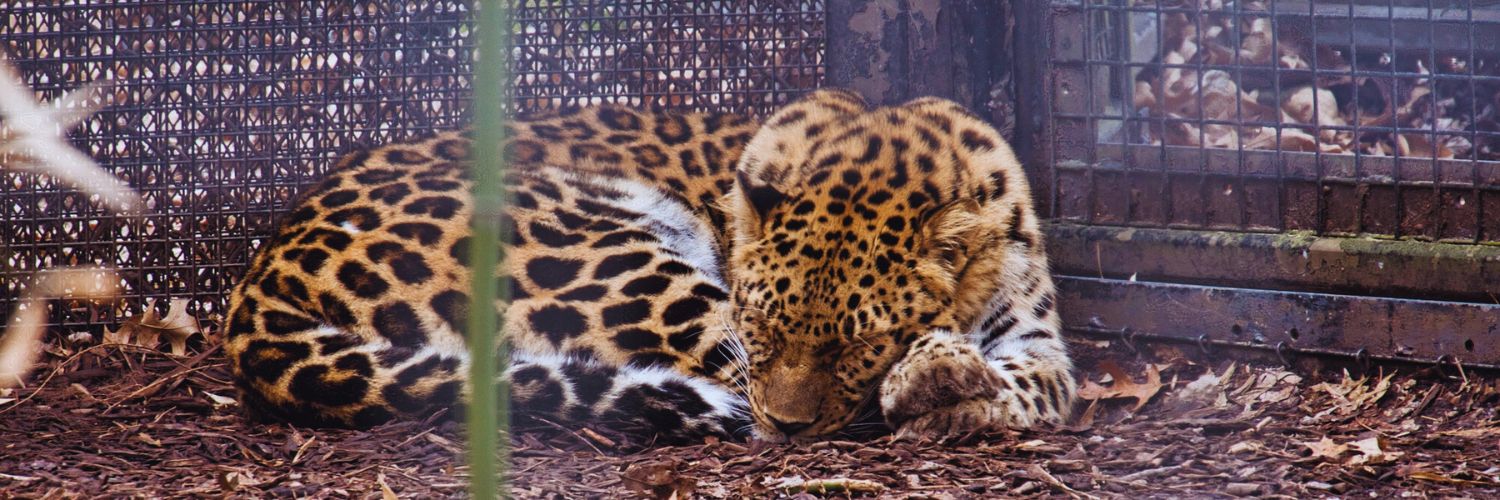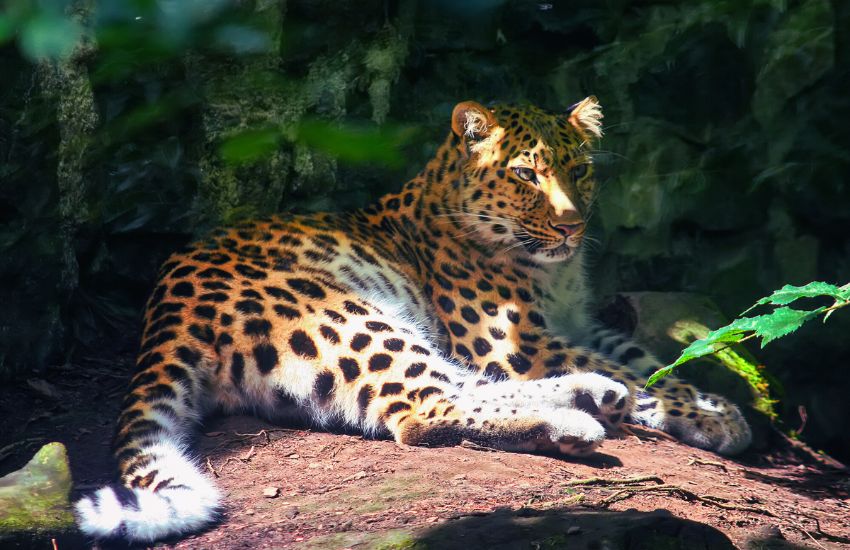shelter pets in need
Each order helps pets in need

Today, we're shining the spotlight on a truly majestic creature: the Amur Leopard (a subspecies of Prionailurus bengalensis). This feline beauty is not just any cat—it's the world's rarest cat (at least among the big ones). And guess what? It needs our help.
This big cat is more than just a pretty face. Its survival is crucial for biodiversity and maintaining ecological balance. But sadly, its species is teetering on the brink of extinction. That's why we're here today—to spread awareness and inspire action to save this incredible species.
In this article, we'll dive into everything you need to know about the Amur big cat—from its unique characteristics to the threats it faces and, most importantly, what we can do to help.
The Amur Leopard cat is a beauty with a thick coat of spot-covered fur that changes from light yellow to rusty orange depending on the season. It's also a champion of speed—able to run at speeds of up to 37 mph and leap more than 19 feet horizontally!
Historically, these leopards roamed across the Korean Peninsula, northeastern China, and the Russian Far East. But their numbers have dwindled dramatically over time due to various factors we'll discuss later.
Today, it's estimated that less than 100 Amur Leopards are left in the wild. That's right—just about enough to fill a small movie theater. They're primarily found in Russia and China. So yeah, things are pretty dire for our spotted friends. But don't lose hope just yet! There are plenty of organizations working hard to change this narrative.

According to wildlife conservationists, the beautiful Amur leopard is the rarest big cat on earth. Scientists estimate that the entire population of this critically endangered leopard species consists of around 60 individuals in the Russian Far East and another 8-12 individuals in nearby China. Those numbers sound pretty discouraging, but the good news is that their population has more than doubled in 7 years, up from just 30 individuals in 2007.
The Amur is the northernmost species of leopard, well-adapted to living in cold mountain forest habitats. Most of the remaining Amurs live in Russia's Land of the Leopard National Park. They are solitary by nature, with superior athleticism and hunting skills.
Why is the Amur leopard so endangered? Sadly, just take one look at its beautiful spotted fur coat, and you'll know the answer . . . poaching. Undercover investigators have found Amur skins for sale in Russian villages near the park. A large male skin can sell for as much as $1,000.
This big cat is also endangered because of the declining populations of prey species (such as deer and hare) in its habitat. Experts note that China's prey base is so depleted that it cannot support a large leopard population. The outlook is more positive in Russia, where the habitat can support more leopards.
Conservationists believe that the Amur leopard population in Russia can continue to rebound with a concerted effort to end poaching, repopulate prey animals, and practice more sustainable logging in the leopard's remote forest habitat.
But it's not all doom and gloom! Many organizations and individuals are working tirelessly to save the Amurs. International bodies like the World Wildlife Fund (WWF) play a significant role in conservation efforts.
On a national level, Russia has established the Land of the Leopard National Park, which provides a haven for about 60% of the remaining wild population. China is also stepping up its game with its own leopard reserves.
There are also some heartening success stories out there. Take, for example, the reintroduction of leopards into suitable habitats where they've previously disappeared. These projects show that we can help these magnificent creatures bounce back with enough effort and resources.
So yes, saving the Amurs is a huge challenge—but it's one that we're definitely up for!

Let's not forget that saving the Amur cat isn't a walk in the park. There are some pretty hefty obstacles in our way.
Political and economic issues often hamper conservation efforts. Governments may prioritize short-term economic gains over long-term ecological health. Plus, cross-border cooperation can be tricky when it comes to shared habitats.
Scientific and logistical challenges also abound. Tracking leopards, studying their behavior, and implementing conservation strategies in remote areas is no easy feat—it requires time, expertise, and resources.
And then there's public awareness—or rather, the lack thereof. Many people aren't even aware of the Amur Leopard's plight. And as they say, you can't protect what you don't know about! So, spreading the word is a crucial part of the mission.
So, what does the future hold for our spotted feline friend? Well, with continued conservation efforts, there's definitely potential for recovery. It won't be easy or quick, but it's certainly possible.
And guess what? You can play a part in this, too! By supporting conservation organizations, spreading awareness, and making environmentally friendly choices, you can help ensure a brighter future for this big cat. You can wear some rescue shirts and talk to your friends about this issue to help raise awareness—every action helps!The key here is persistence. We must keep up the momentum and continue our efforts—because every single Amur Leopard saved is a victory. And who doesn't love a good comeback story?
The Amur Leopard is more than just a beautiful creature; it's a vital part of our planet's biodiversity and an emblem of the challenges facing wildlife today.
Now, it's over to you. Let's turn this story into a rallying cry for conservation. Share this article, talk about the Amur Leopard with your friends, and support organizations working to save them—every little bit helps!
With hope and concerted effort, we can ensure that future generations will get to marvel at these incredible cats, too.
Poaching is considered one of the biggest threats to Amurs. They're hunted for their beautiful, spotted fur. Additionally, poachers often target the leopards' prey, leading to food scarcity for these big felines.
Amurs primarily live in the Russian Far East, with a small population also found in northeastern China.
Yes, there are Amurs in captivity, which play a crucial role in breeding programs aimed at increasing their numbers.
You can donate to organizations like the Wild Cats Conservation Alliance or local initiatives focusing on Amur conservation.
Your Animal Hearted purchase saves lives! 25% of all proceeds are donated to no-kill animal shelters!
Comments
Leave a comment